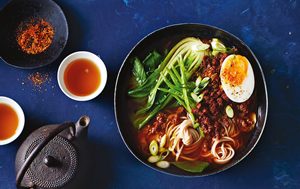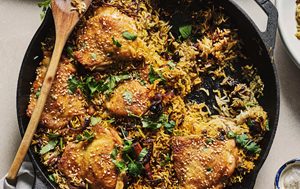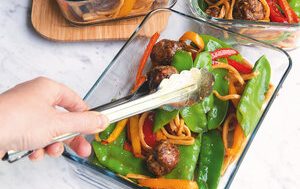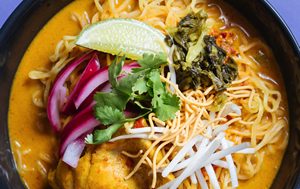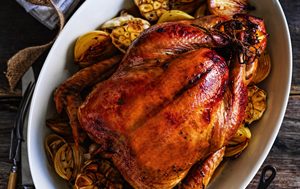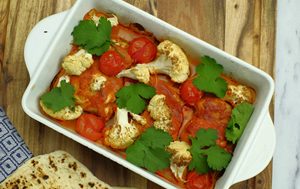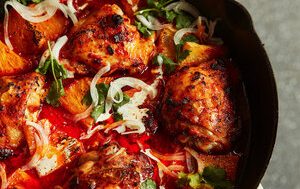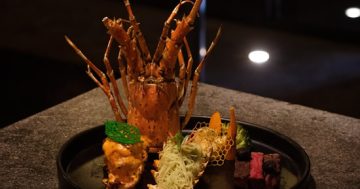By Christine Salins.
Food waste is a hot topic today, but a lot of people don’t realise it’s not just shops and restaurants that can do something about it, consumers can make a big difference too.
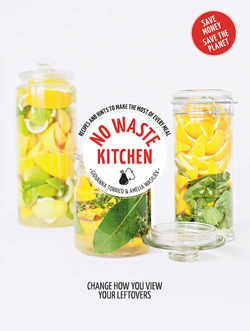 Amelia Wasiliev, the NSW author of No Waste Kitchen (Hachette, $$19.99), says around 35 to 50 per cent of all food produced is wasted, with the wastage split between food producers, farmers and growers, processors, retailers and consumers.
Amelia Wasiliev, the NSW author of No Waste Kitchen (Hachette, $$19.99), says around 35 to 50 per cent of all food produced is wasted, with the wastage split between food producers, farmers and growers, processors, retailers and consumers.
Consumers account for about half of the overall food waste globally. But as Wasiliev points out, it’s easy to address this on a personal level, just by making a few small changes.
“These days we look to purchase only the best-looking produce. We also buy with our eyes, which means we buy too much food that isn’t always stored correctly and can quickly go bad if we don’t get around to using it fast enough,” she says.
“With just a few simple tips you can change your thinking – buy local and seasonal produce, plan your menu and shopping – and before long you will be steps closer to a waste-free kitchen.”
Wasiliev provides valuable advice on storing and preserving your food so that it lasts longer. She says the freezer should be your best friend, something that I have long advocated.
She offers a great illustration of all the foods you might be surprised to know will freeze well in ice cube trays including yoghurt, grated ginger and lemon wedges. For years, I’ve been popping food into the freezer if there’s anything left over before we head off on trips away – whether it be the last few dregs in a tub of cream or half a bottle of pasta sauce.
It’s amazing how easily it can be resurrected, weeks and sometimes even months later. It’s also great having a permanent supply of ginger, chillies etc in the freezer for last-minute additions to stir-fries. When tubs of berries are cheap, I pop the whole tub in the freezer, so that I have a ready supply for blitzing in smoothies.
No Waste Kitchen has lots of recipes for using up scraps and leftovers in easy drinks, soups and dishes. No need to waste those broccoli stems, cucumber skins, stale bread and egg whites when you can turn them into a Cucumber Peel & Mint Stem Spritz, Broccoli Stem Slaw, Baked Stale Pitta Chips, and Egg White Friands.
When doing a roast chicken, I always use the carcass to make my own stock, but Wasiliev goes one step further by turning it straight into chicken soup.
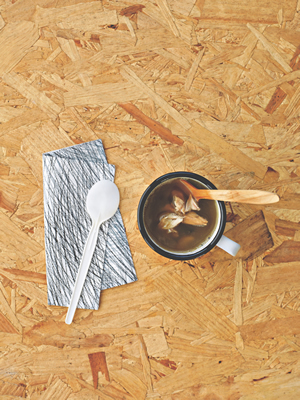 Leftover Roast Chicken Soup
Leftover Roast Chicken Soup
Serves 4
2 tablespoons extra virgin olive oil
150g mixed vegetable scraps (onion, celery, carrot, parsley)
1 chicken carcass (leftover from a roast)
1 litre vegetable stock
Sea salt and black pepper
Heat the oil in a saucepan over medium heat. Add the vegetable scraps and sauté for 5 minutes. Add the chicken carcass, vegetable stock and enough water to cover the ingredients. Bring to the boil, lower the heat and simmer for at least 2 hours. Use a muslin-lined sieve to pour the soup into another pan. Remove the chicken from the bones and add it back to the soup, then cook for a further 30 minutes. Season to taste.
Recipe and images from No Waste Kitchen: Hachette Healthy Living by Amelia Wasiliev. Published by Hachette Australia RRP $19.99.


